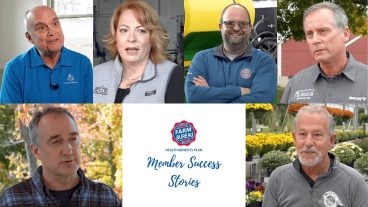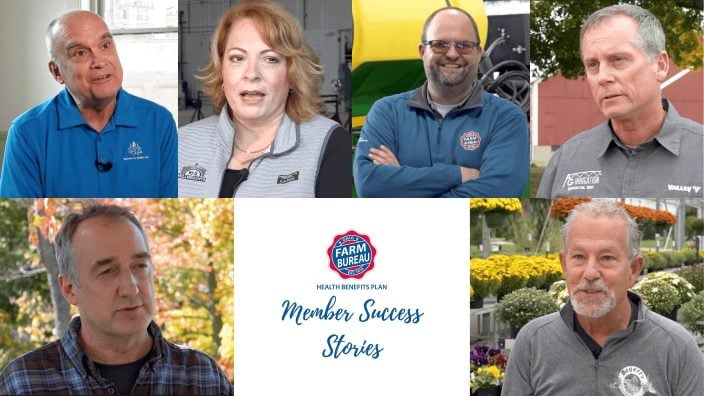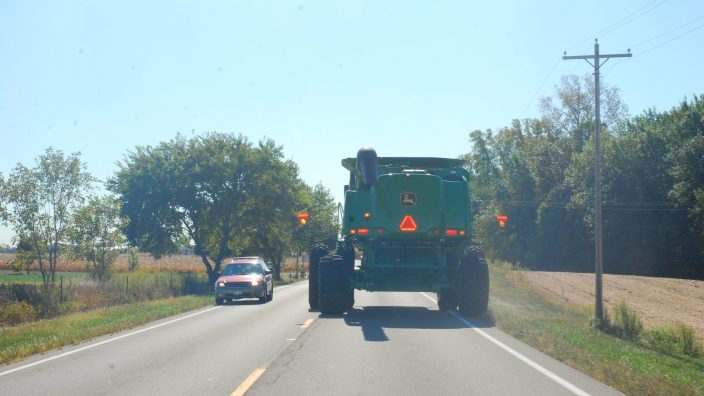Farmer’s Guide to Trucking Regulations available to Ohio Farm Bureau members
The guide includes a farm driver checklist, overview of state and federal regulations and exemptions, CDL qualifications and more.
Read More
Without farmers, we would not have food for our tables.
They are the beginning link in the food chain so they are very important to all of us. At the same time, we need to recognize that farming is a hazardous occupation. With all the equipment needed to operate a successful farm today, we find all kinds of dangerous jobs that need to be done. Equipment has power take-off drives that need to be shielded and all kinds of belts and sickle bar knives and more moving parts that need to be serviced.
Storage bins, silos and hay storage facilities all have some hazards in and around them. Grain bin storage can be a problem if the grain gets stuck in the bin and has to be opened up by someone who is not careful. On top of all these risks is the need to farm land that may require traveling on highways because some fields are distant from the main buildings. This means using the highways to get farm equipment from place to place.
Highway travel is very dangerous. According to the United States Department of Agriculture, there are about 15,000 highway farm accidents each year in the United States. This is way too many and suggests that intensive educational and regulatory programs are needed to help prevent these losses.
Locally, we have more highway accidents involving farm equipment than we should have. Most, but not all, involve impatient drivers who think they can’t wait to get around a slow-moving piece of equipment. So, they run the risk of an accident.
Recently a friend was going down a local highway with his tractor towing a piece of small equipment. He had his slow-moving vehicle sign on and proper lights signaling a left-hand turn. He also had his arm out to signal.
Behind him was his pickup truck with a driver that was signaling a left-hand turn. In spite of all these safety measures, a car came up too fast behind him and smashed into his tractor and equipment. He was thrown off the tractor and seriously injured. He was taken by helicopter to an area hospital. His injuries were serious and included several broken ribs and a multitude of bumps, scratches and bruises. He won’t be able to go back to his farm work for several weeks as his body heals.
The other day I was visiting with another friend who had a similar thing happen. However, she was not tossed off the tractor but suffered a lot of bruises and scratches. Again, it was an impatient driver.
Tractor and big equipment operators on the highway also have a responsibility to help avoid accidents. Since they may be traveling 15 to 20 mph or less, traffic may back up behind them. As soon as they find a safe spot, they need to pull over and let that traffic go by. They may need to do this more than once before they can get off the road.
Slow-moving equipment also is required to have slow moving vehicle emblem sign on the corner of their equipment. Most farmers know what the lighting includes. If not, they need to check with law enforcement officials.
Safety on the farm is something farmers need to be conscious of constantly. Accidents happen quickly and healing can take a long time. As fall harvest gets underway and big equipment is needed, special safety is important. Let’s all remember, they are out there harvesting our food supply for us.
Submitted by John Parker, professor emeritus, The Ohio State University and an independent agricultural writer for Ashtabula County Farm Bureau and other farm organizations.
OFBF Mission: Working together for Ohio farmers to advance agriculture and strengthen our communities.


The guide includes a farm driver checklist, overview of state and federal regulations and exemptions, CDL qualifications and more.
Read More


ODA will enroll 500,000 acres into the program for a two-week sign-up period, beginning April 22, 2024, through May 6, 2024. Contact local SWCD offices to apply.
Read More

Katie Share of Columbus has been named ExploreAg and Youth Development Specialist for Ohio Farm Bureau.
Read More

Mary Klopfenstein of Delphos has been named Young Ag Professional and Ag Literacy Program Specialist for Ohio Farm Bureau.
Read More

The plan has been updated to give sole proprietors access to more rate stability and a smart solution that offers potential savings on health care.
Read More

The American Farm Bureau Federation, in partnership with Farm Credit, is seeking entrepreneurs to apply online by June 15 for the 2025 Farm Bureau Ag Innovation Challenge.
Read More

Adele Flynn of Wellington has been elected treasurer of the Ohio Farm Bureau Federation and now holds the third highest elected office in Ohio’s largest and most influential farm organization.
Read More

Producers are urged to work with their veterinarian to practice enhanced biosecurity measures and review and limit cattle movements within production systems.
Read More

The changing seasons bring with them the need to thoroughly inspect pole barns for any damages that may have occurred during the winter months.
Read More

Hundreds of Ohio businesses and sole proprietors are raving about Ohio Farm Bureau’s Health Benefits plan with lower, predictable costs and easy enrollment and administration options.
Read More